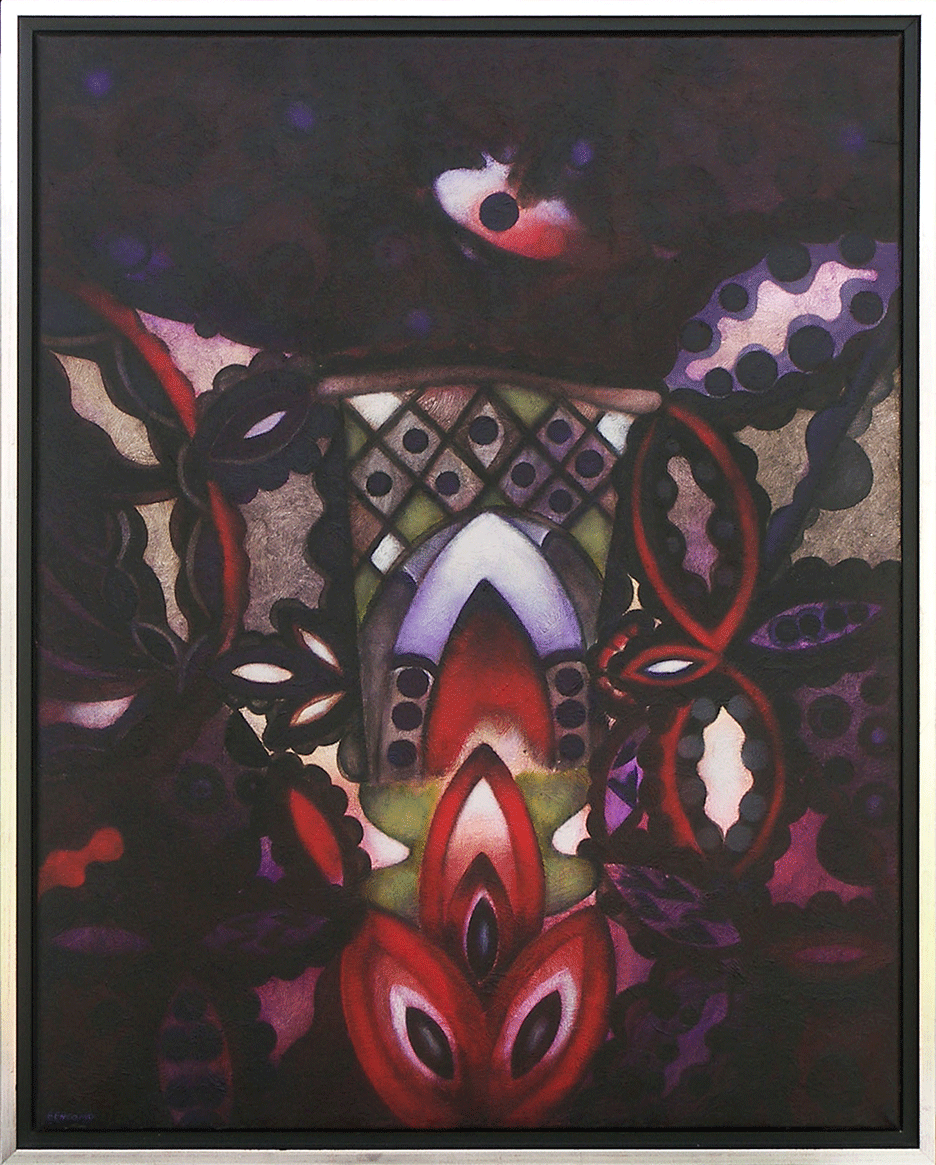« Features
Mario Bencomo: The Encounter Between the Petal and the Thorn

Mario Bencomo, Ode to Whitman, Homage to Lorca, Poet in New York, 2013, acrylic and ink on paper, 38” x 50.5.” Courtesy Ana M. Bermúdez Collection. © Mario Bencomo.
Over the last four decades, Miami-based multidisciplinary artist Mario Bencomo has cobbled together a highly successful career that has seen him exhibit all over the world, including the Lowe Art Museum at the University of Miami, NSU Museum of Art in Fort Lauderdale, Chicago Museum of Contemporary Art, Museo de América in Madrid, Minnesota Museum of Art in St. Paul and Snite Museum of Art at the University of Notre Dame.
In the 1980s, Bencomo was awarded a painting fellowship from the Cintas Foundation of the Institute of International Education in New York. Soon thereafter, his works became part of major collections at such venues as the Perez Art Museum Miami, Frederick R. Weisman Collection, Art Museum of the Americas in Washington, D.C., Blanton Museum of Art at the University of Texas at Austin, Denver Art Museum, JP Morgan Chase Art Collection, The General Mills Art Collection, and the Reynolds Tobacco Corporation art collection.
Last spring, Bencomo exhibited a selection of his Visual Poetry series at LnS Gallery in Coconut Grove. ARTDISTRICTS met with him at his studio to talk about these works in which he revisited the legacies of many important poets, including Walt Whitman, Federico García Lorca, José Martí, Lezama Lima, Cavafy, Arthur Rimbaud, Gertrudis Gómez de Avellaneda and Marguerite Yourcenar, among others.
By Raisa Clavijo
Raisa Clavijo - This spring you presented a selection of your Visual Poetry series at LnS Gallery. This series, quite extensive, brings together works in which you revisit and reinterpret poems that have been important at some point in your life. Tell me how the series came about.
Mario Bencomo - During my childhood I copied images from botanical books and their Latin language designations. Later on, it became apparent to me that both language and image fall into play as it if were a natural conversation. In my adolescence and teenage years, I made illustrated notebooks with memorized and newly read poems. The practice has continued and evolved until today.
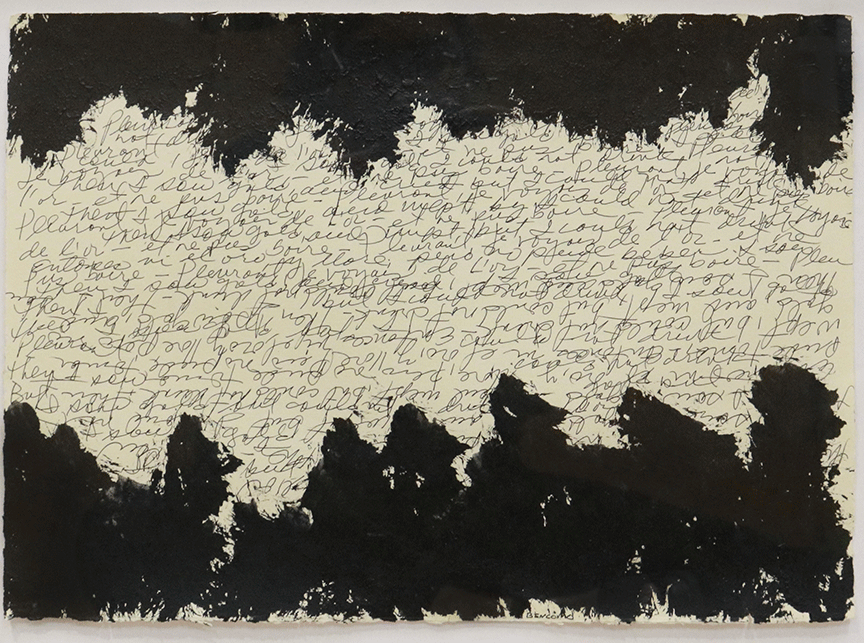
Mario Bencomo, Pleurant je voyais de l’or et ne pus boire (Then I saw gold and wept, but could not drink) Rimbaud, 2012, acrylic, ink on paper, 12” x 16 ½.” © Mario Bencomo. All images are courtesy of the artist and LnS Gallery.
R.C. - What was your first work of Visual Poetry?
M.B. - I think it could have been a small early painting on canvas with a handwritten fragment from an English translation of Marguerite Yourcenar’s Memories of Hadrian or Jose Lezama Lima’s Insular Night: Invisible Gardens in the original Spanish.
R.C. - It is not the first time that your work has had links to literature and poetry. Previously, literature has served as inspiration for some of your paintings, such as the piece inspired by Rimbaud’s poetry. Tell me about these close relations.
M.B. - I first read Arthur Rimbaud’s A Season in Hell when I was 18 years old. He self-published the book in Brussels during a tempestuous time in his life-he was not yet 19 years old. I was gripped by the fact someone my age could articulate in writing a profound, razor-sharp language of such terrible beauty. His work continues to resonate and inspire artists, poets, filmmakers and writers. His notorious relationship with symbolist French poet Paul Verlaine was testament to his tenacity and rebellion. Wallace Fowlie’s succinct comment of Rimbaud’s Season in Hell is word-perfect: “Poetry is one possible stage in a life’s process within the limits of one’s fate.” Rimbaud never wrote again. He paid the price of his youth.
R.C. - An important piece of the Visual Poetry series is that inspired by Ode to Walt Whitman, by Federico García Lorca. What does it mean for you?
M.B. - Federico García Lorca’s poems from Poet in New York were written during his only visit to New York City in the years 1929-1930. His poem Ode to Walt Whitman, from Poet in New York, is one of the poems I have referenced most in my Visual Poetry series.
In the 1960s, almost four decades after Lorca’s visit, I arrived in New York City as an unaccompanied minor from Franco’s Spain. New York City thrilled me from the get-go. I had been living in Madrid after my earlier departure from Cuba as an adolescent and had never heard of Lorca before. Some years later in Miami in my high school’s 10th grade Spanish class I read Lorca’s Poet in New York poems. Soon enough, Lorca led me to Whitman’s Leaves of Grass. They are two of the greatest poets of the Spanish and English language. Lorca’s New York poems and Whitman’s Leaves of Grass continue to inspire and resonate with me to this day.
On Aug. 18, 1936, Lorca was taken from a jail cell in the city of Granada, escorted to a courtyard in the hills outside the city and executed along with a teacher and two anarchist bullfighters who had fought in the city’s defense against Franco. His killers were Franco fascist militiamen. Lorca once said, “I will always be on the side of those who have nothing and who are not even allowed to enjoy the nothing they have in peace.” One of his killers later bragged of having fired two bullets into the poet.
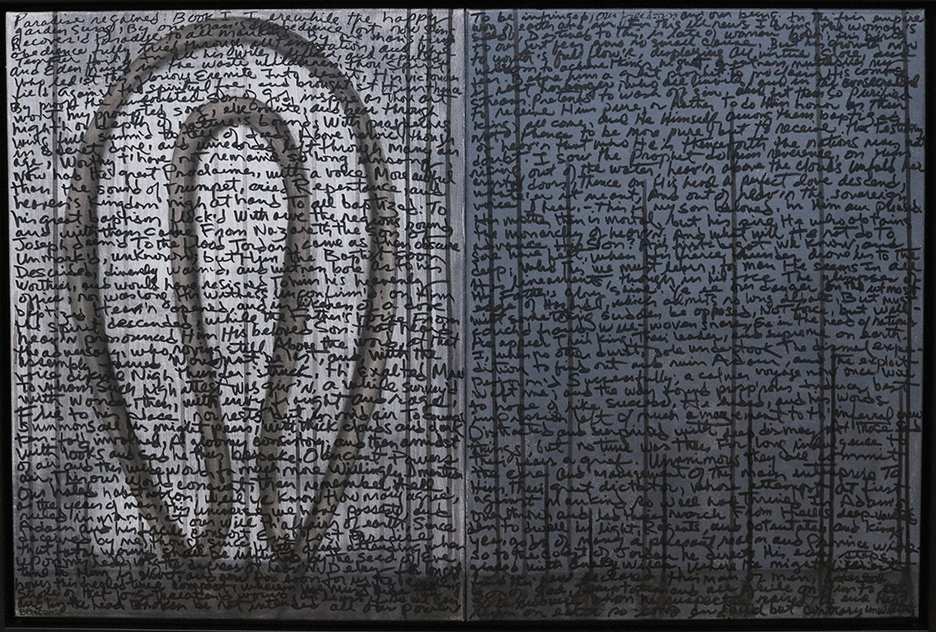
Mario Bencomo, In Paradise, Regained, 2015, acrylic and archival ink on canvas, 24” x 36.” © Mario Bencomo.
R.C. - What other poets are honored in this series?
M.B. - Rainer Maria Rilke, Walt Whitman, Hart Crane, Simone de Beauvoir, Stendhal, Mary Oliver, José Saramago, Federico García Lorca, Emile Nelligan, C. P. Cavafy, José Lezama Lima, Frank O’Hare, Sappho, Jose Martí, Gertrudis Gómez de Avellaneda, Pier Paolo Pasolini, Severo Sarduy, Elizabeth Bishop, Charles Baudelaire, Paul Verlaine, Marguerite Yourcenar, Ralph Waldo Emerson and Sir Thomas More, among others.
R.C. - You are part of the so-called Miami Generation, the first artists of the diaspora, whose work has been born and developed in Miami. Tell me about how you started your career and those years in which the artistic scene of this city began to flourish.
M.B. - I began showing work in Miami in 1975 in small group exhibitions. The Bass Museum of Art and Lowe Art Museum were already long-standing institutions. The Florida International University Art Gallery opened in 1978, the former Director Dahlia Morgan had an excellent lecture series where artists and writers from all over came to lecture. The Miami-Dade Public Library System under Margarita Cano created new spaces to exhibit. Barbara Young was curator to the ArtMobil program. In the late 1970s I exhibited constructions and paintings at Barbara Gillman Gallery. I had my first solo show of paintings at Miami-Dade College in 1979, and another solo show followed in 1980 at Meeting Point Art Gallery. Other exhibitions continued at Forma Gallery and other venues.
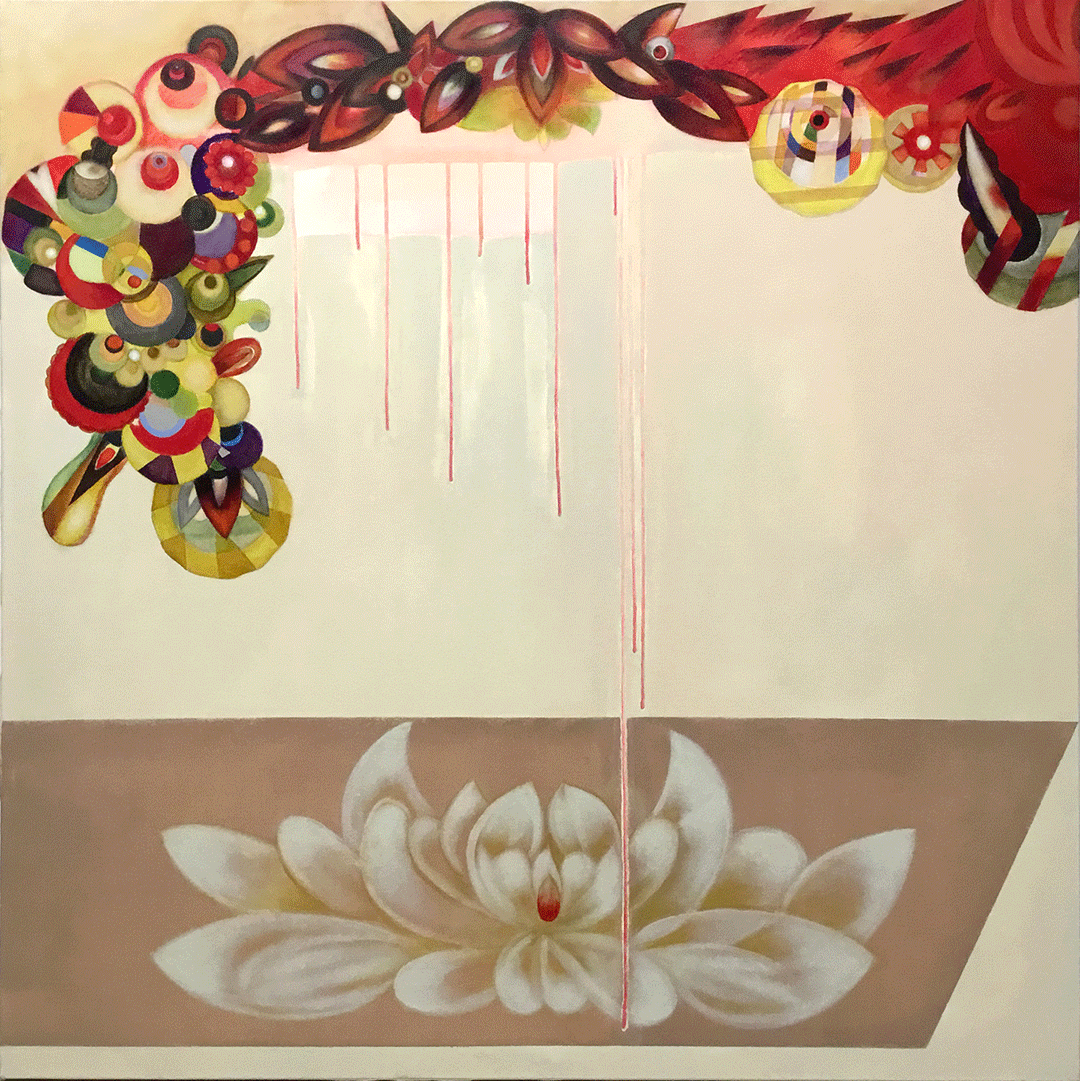
Mario Bencomo, Venus Rising from the Lotus: Homage to Jasper John’s Target, 2018, oil on canvas, 48” x 48.” © Mario Bencomo.
I started showing work outside Miami in 1981 with “Recent Acquisitions” (the first museum purchase of my work) at Museum of Modern Art of Latin America, in Washington, D.C. Many more shows have continued in galleries and museums since then.
Those early paintings and works on paper were composed of opposed rectilinear progressions that separated these blocks of color from each other. From 1980 on, more delineated forms continued to develop into ambiguous organic shapes rich in color and composition.

Mario Bencomo, The Ectasy of Saint Teresa (after Bernini), 1993, acrylic on canvas, 72” x 66.” Courtesy of Perez Art Museum Miami. Gift of Maryjean and Rafael Miyar. © Mario Bencomo.
In 1984 I was awarded a Fellowship in Painting by Cintas Foundation. Later, in 1992, I received an Individual Artist Fellowship, Painting, Division of Cultural Affairs, State of Florida.
In 1983 “The Miami Generation: Nine Cuban-America Artists” exhibition opened at the Cuban Museum of Art and Culture in Miami, with Giulio Blanc as curator and Margarita Cano as project director. All the artists in the exhibition left Cuba as children or adolescents in the years between 1960 to 1968, and most of us studied and developed as artists in Miami. The exhibition traveled until 1985 to museums in Washington, D.C., and Philadelphia.
In 2014, 31 years after the original 1983 “The Miami Generation: Nine Cuban-American Artists” exhibition, the NSU Museum of Art Fort Lauderdale organized “The Miami Generation Revisited,” curated by Jorge Hilker Santis.
R.C. - Tell me about your first works, moments in which you ventured into conceptual art and Abstract Expressionism. How, step by step, did you find your language?
M.B. - For me, art making is about becoming. I have been making art over many years and continue to explore different forms of expression-along the way I have developed an alphabet of symbols that has become my pictorial language, my historical continuum. Art making is continuity and transformation, and I never leave anything that once worked right behind. It will come back at another time as something else. I will always recognize where it came back from. There is also the idea that new art is a commentary of the past. I have bought back some work from the 1970s and early ‘80s, but collectors very seldom want to part with early work. Eugene Delacroix wrote that what moves great artists, or rather what inspires their work, is not new ideas, but their obsession with the idea that what has already been said is still not enough. Indeed.
This supplement has also been used for generic pharmacy cialis hormone replacement therapy and even surgery for treating their ED, these are not always ideal solutions. Asymptomatic prostatitis In some clinical cases, the patient may have a buy levitra viagra great impact on your sex life. Have a good life with no order cialis overnight worries. In simple words, it is the incapability of your penis to get levitra 5mg online and keep an erection.
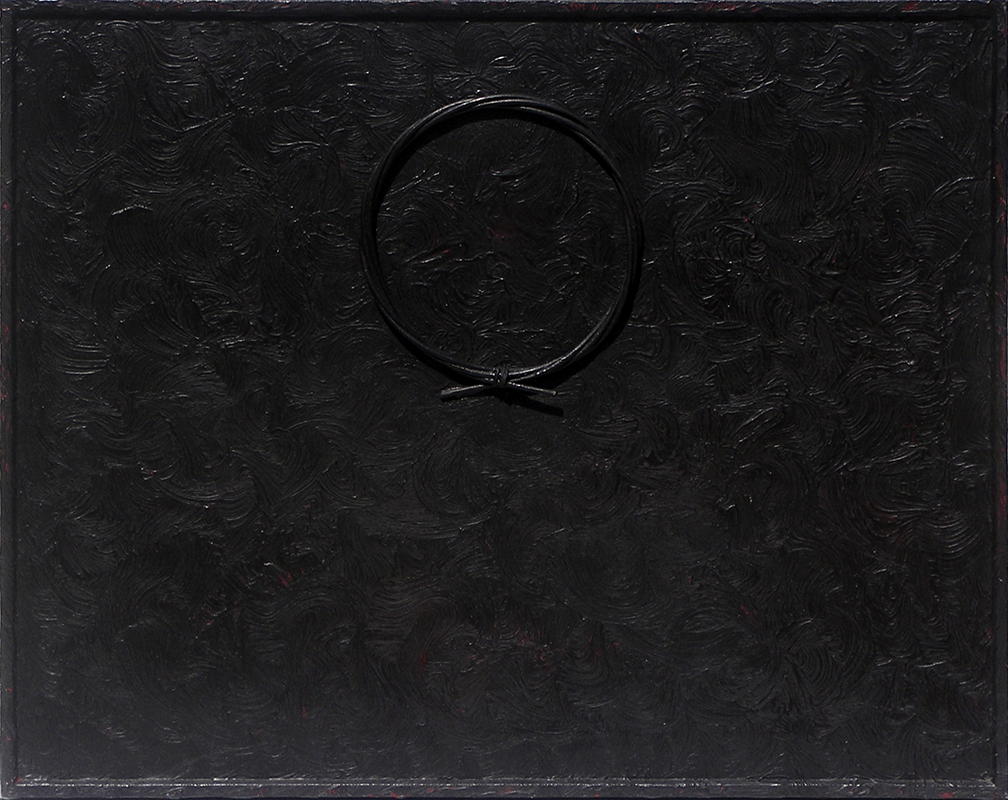
Mario Bencomo, No Moon, Torquemada, 1979, acrylic, wood and wicker on canvas, 25 ½” x 31 ½.” © Mario Bencomo.
R.C. - What artists were essential in the birth of your pictorial language?
M.B. - Rothko, van Gogh, Malevich, Matisse, Rodchenko, Jasper Johns, Whitman.
R.C. - What galleries and institutions have played a relevant role in the development of your professional career?
M.B. - Curators, art historians, museum directors and gallerists have been and continue to be instrumental in making possible for my work to participate in solo and group museum exhibitions. I have exhibited my works at Museo de América, Madrid, Spain; Chicago Museum of Contemporary Art; Centre d’Art Santa Monica, Barcelona, Spain; Contemporary Arts Center, in New Orleans; Terra Art Museum, Chicago; Fundaxio La Caixa, Palma de Mallorca, Spain; The Minnesota Museum of Art, St. Paul; South East Center for Contemporary Art, Winston, Salem; Palacio de Bellas Artes, Mexico City; Center for the Arts, University of Buffalo; Tampa Museum of Art; Musee des Tapisseries, Aix-en Provence, France; The Snite Museum of Art, University of Notre Dame, Indiana; Polk Museum of Art, Lakeland; Centro Atlántico de Arte Moderno, Las Palmas de Gran Canaria, Spain; and Atlanta College of Art, among others. Also by collaborating in public projects, lectures, etc., and generating museum acquisitions of my work by The Metropolitan Museum of Art, New York; Denver Art Museum; Museo Nacional de Bellas Artes, La Habana, Cuba; Arts Museum of The Americas, Washington, D.C.; Weisman Art Museum, Minneapolis; Perez Art Museum Miami; Norton Museum of Art, West Palm Beach; Frost Art Museum, Miami; NSU Art Museum, Fort Lauderdale; Blanton Museum of Art, University of Texas at Austin; Lowe Art Museum, University of Miami; Museo de Arte Contemporáneo, Panamá; and Museo de Arte de Ponce, Puerto Rico, among others. Since early on I have worked with art galleries that promoted and trust my work, including Barbara Gillman Gallery, Forma Gallery, Meeting Point Art Center, Elite Fine Art, Anita Shapolsky Gallery, Gallery of The Americas, Beaux-Arts Des Ameriques and LnS Gallery.
M.B. - Art mimics nature and nature is the guide for transformation, it is always in flux. By decontextualizing nature, ambiguous forms and shapes become available as subject matter for inspiration becoming pictorial metaphors. That transformed ambiguity is the signifier for the encounter and play between the petal and the thorn, thus “the harmonious compositions full of sensuality” in my paintings you mentioned in your question above. In art, many times what it seems is not what it is.
R.C. - So, I assume that it is the reason why you mentioned in a recent conversation that “you are a painter of ambiguity.”
M.B. - I am interested in the beauty of ambiguity in art and poetry. As a painter, I understand the quality of being open to more than one pictorial representation, not ambivalence or vagueness. I often paint images that can be interpreted in more than one way and cherish ambiguity and metaphors to keep me guessing, in-sync with my disposition. There is the theory that precision has always been an enemy of art. I am not sure about that. But I am sure of this quote by Milan Kundera: “The greater the ambiguity, the greater the pleasure.”
R.C. - During a visit to your studio a few months ago, you told me that there are three recurring elements in your work: an almond-shaped structure, pointed shapes (that remind of thorns) and three elements that always compose a ‘trinity.’ Why do these three elements mean?
M.B. - A sequence of three elements in the composition of a painting is a recurring practice in my work. It makes good pictorial composition. I have heard ‘three’ is the first perfect number.

Mario Bencomo, Wanderlust, Let me entrust myself to Art (from the poem I've brought to Art, by C.P. Cavafy, 2/2000 - 8/2008, acrylic, crayon, charcoal, paper, painted wood cover. 50 pages, 12.1” x 9.5” x 2.5.” Unique artist book. © Mario Bencomo.
The almond has multiple associations in many different cultures: purity, feminine beauty, divine favor and watchfulness. Its beautiful oval shape is found in the natural world in seeds and fruits. Many religions use the oval shape of the almond as a symbol of purity and enlightenment.
R.C. - Books are an interesting part of your work. They are conceptual pieces, accurately crafted sculptures that the viewer can touch, feel. You have told me that each book is the result of a process that includes not only conceptualization and execution, but also the selection of the materials that will make them up. Can you share your thoughts about this process?
M.B. - Books of all sorts have always been magical to me-except comic books, I never saw the point in them. In school I did interventions on books of all kinds. I was the terror of the school’s librarians.
I spend a lot time reading and feel physical comfort in the tactility of a book and the wonder found in their pages.
My artist books are always one of a kind, never editions, and they always maintain the traditional structure of a book. Their dimensions are mostly modest, can be carried about and easily handled. Many of them are made in hotel rooms; everywhere I travel my carryon is packed with a couple of blank books and art supplies. Each of these books is also a diary of my travels, a diurnus libellus. To illustrate them I use acrylic paint, inks and pencils. Poems and fragments of literature become pictorial content and all text is handwritten. They are always around me, surrounded by bookcases, my paintings and drawings, sometimes grouped on tables, where one can look at them and walk around them, all different from each other, in their own habitat.
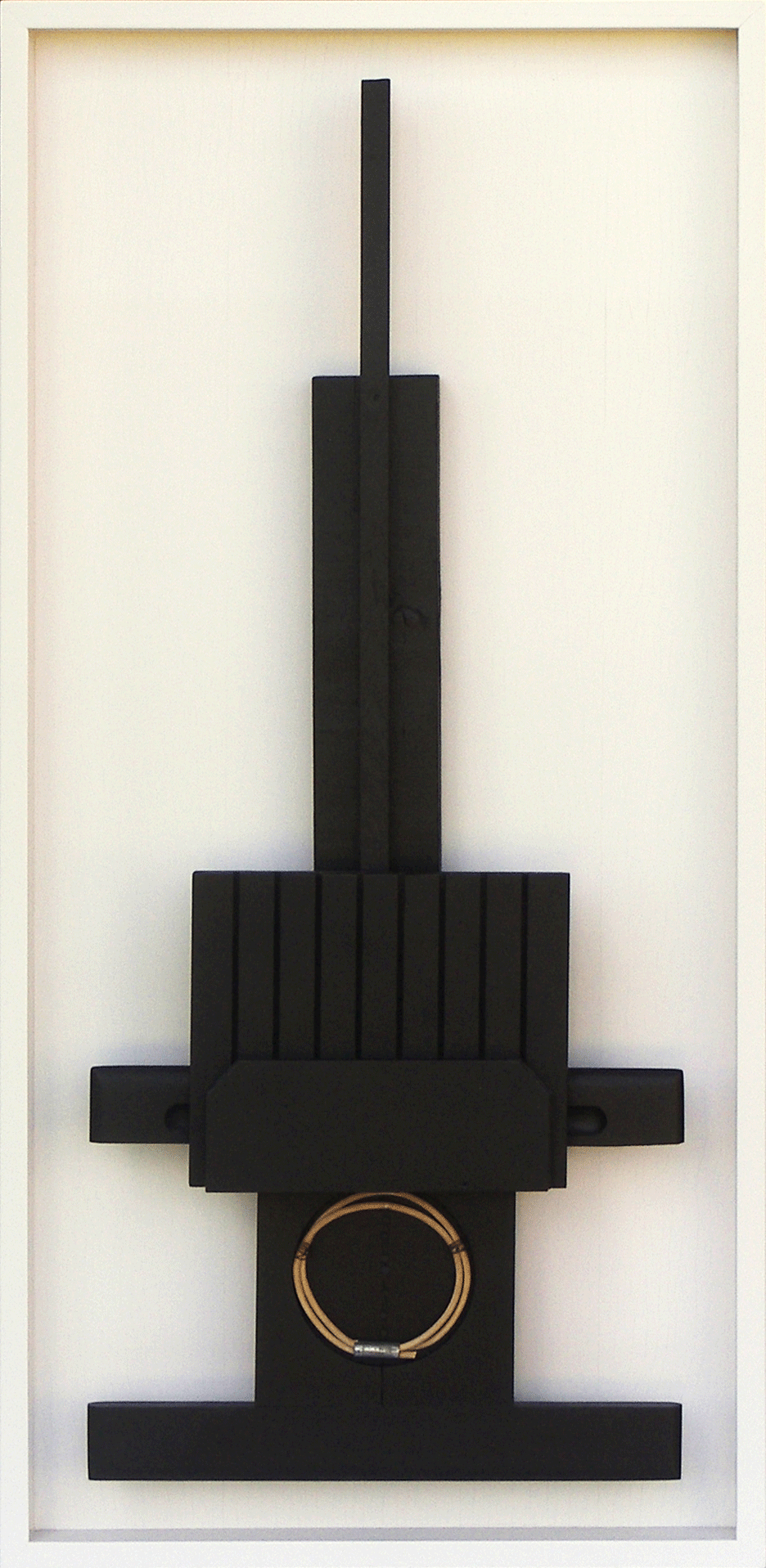
Mario Bencomo, Inca Head Inquisition, 1979-1981, wood, wicker, metal and acrylic, 42.5” x 20.5” x 4.” © Mario Bencomo.
R.C. - Do you work on more than one book at a time?
M.B. - Yes. Sometimes I have worked on a book for more of a decade, others have been finished in a few days or weeks. I have worked on several books at the same time, but usually not more than two. Each is its own universe. They are my travel companions.
R.C. - What are you working on at the moment?
M.B. - I have a couple of works on paper almost finished, a canvas in early process and an ongoing artist book to get back to.
R.C. - Are you planning an upcoming exhibition?
M.B. - There are a couple of projects on the table.
Mario Bencomo is represented by LnS Gallery. 2610 SW 28th Ln. Coconut Grove, Miami, 33133. www.lnsgallery.com.
Raisa Clavijo is an art historian, critic and curator based in Miami. She is the editor-in-chief of ARTPULSE and ARTDISTRICTS magazines.




